At the close of each year, do you find yourself writing a list of ambitious resolutions to eat healthier and exercise more? Perhaps you decide to eat more kale and spend more time at yoga and less lounging on the couch. We often craft New Year’s resolutions with good intentions but rarely fully achieve them.
If we shift our healthy goals toward bettering our cats’ lives, however, we may just be more motivated to accomplish them throughout 2017. “Maintaining a pet’s health is just as important as maintaining your own health,” says Leni Kaplan, DVM, MS, a Lecturer in the Community Practice Service at Cornell University College of Veterinary Medicine.
Marking Progress
“Due to the strength and exquisiteness of the human-animal bond, it is more likely that an owner will find it easier to adhere to a resolution for their pet than for themselves. And remember, any progress is better than no progress at all when it comes to maintaining your health and your pet’s health.”
One primary goal that Dr. Kaplan has set to benefit her young cats, Eve and Katie: “I want to build a catio so they can enjoy the great outdoors and experience the sensation of grass tickling their paw pads.”
Behaviorist Katherine A. Houpt, VMD, Ph.D., professor emeritus at Cornell, has seen the value in installing a catio for her cat, Hadley, a 5-year-old Ragdoll. “She spends a lot of time there and gets outdoor enrichment in a safe manner and I hardly have to clean the litter box inside.”
Our two experts offer 20 inspirations — some a spin on traditional resolutions — to improve your cat’s mental and physical well-being as we usher in 2017.
Maintaining Well-Being
1. Topping the list is booking a wellness examination for your cat at least once next year — twice if he’s a senior.
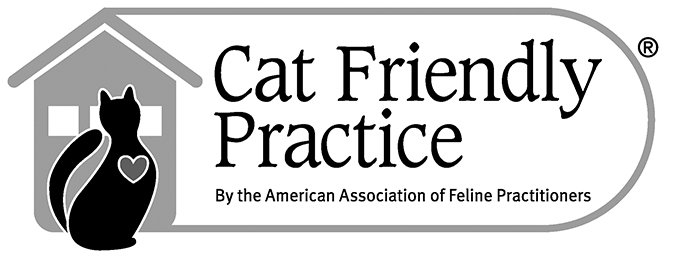
“Not taking your cat to the veterinary clinic for an annual exam year is one of the greatest failures of cat owners,” Dr. Houpt says. “A lot of things can happen to a cat’s health in a year. Plus, cats tend to hide any signs of pain or injury. The complete physical examination can help catch things early when they can be better treated.”
2. Set up your cat for a less-stressful visit to the veterinary clinic by introducing him to his carrier at home. Leave the door open and feed his meals in the carrier for a week before your appointment to create a positive association with the carrier.
“Select carriers with top and front openings — or ones with tops that can easily be unscrewed and removed,” says Dr. Houpt. “A fearful cat can be examined inside the carrier in the exam room, if necessary. And, if possible, seek clinics with separate cat-dog waiting areas or cat-only practices.”
3. Discuss the option of checking vaccine titers with the veterinarian if over-vaccinating is a concern. This alternative to vaccine boosters involves having the veterinarian draw blood from your cat for analysis.
© VadimGuzhva | Bigstock
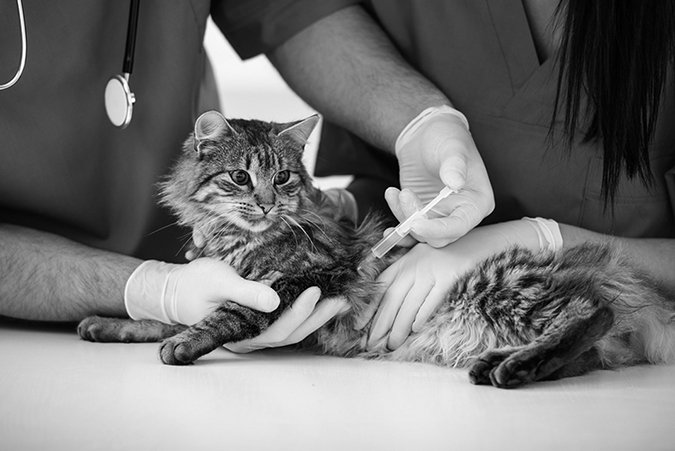
Ask about core (essential) and non-core (life-style based) vaccines. “In order to avoid over-vaccinating cats, veterinarians and owners will discuss a pet’s lifestyle, risk and exposure to infectious agents, and together they will make a decision regarding which vaccines are necessary for that pet’s protection,” says Dr. Kaplan. “Owners should make sure to discuss whether vaccine titers are appropriate for evaluating the immune status of their pets.”
Practicing Litter Box Hygiene
4. Step up litter box cleaning. Make sure to scoop each litter box daily and provide at least one litter box per cat plus an extra in your home.
5. Avoid harsh chemicals and instead use a mild dish soap to wash the litter boxes. Make sure to allow the boxes to air dry before filling with fresh litter.
© axelbueckert | Bigstock
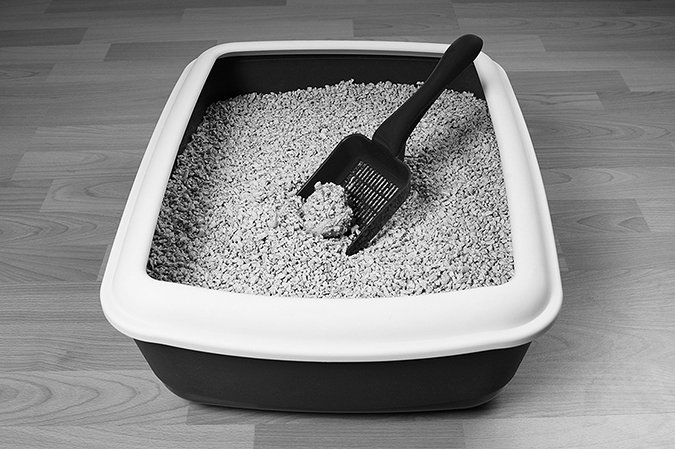
“Do not use heavy cleaners, such as bleach, to clean the litter pans, as these cleaners leave behind a strong odor that is offensive to cats and may discourage them from using the pan,” says Dr. Kaplan. “Make sure the litter pans are replaced every one to two years. Despite consistent cleaning, odors will accumulate and the cats will not want to use them.”
6. Inspect the litter box contents. Veterinary visits are warranted if the deposit is runny or rock-hard or if you detect blood in the feces or the volume of urine is suddenly much higher than normal — a possible sign of diabetes.
7. Allow your cat to test different types of litters to determine the one he prefers. Some cats like coarse litter while others may prefer litter made of recycled paper.
Brushing and Treating
8. Invest five minutes every day to brush your cat’s coat. Select the right brush or comb that fits his coat — shorthaired, longhaired or nearly hairless like the Sphynx.
“Regular brushing reduces the risk of your cat developing matted coats,” says Dr. Houpt. “Brushing also helps distribute the oils in the coat. I recommend getting a cat used to being brushed by giving a tiny treat after one stroke of the brush, followed by two strokes of the brush and another treat. You will build a positive association with the brush because the cat is rewarded with treats.”
© Kurhan | Bigstock
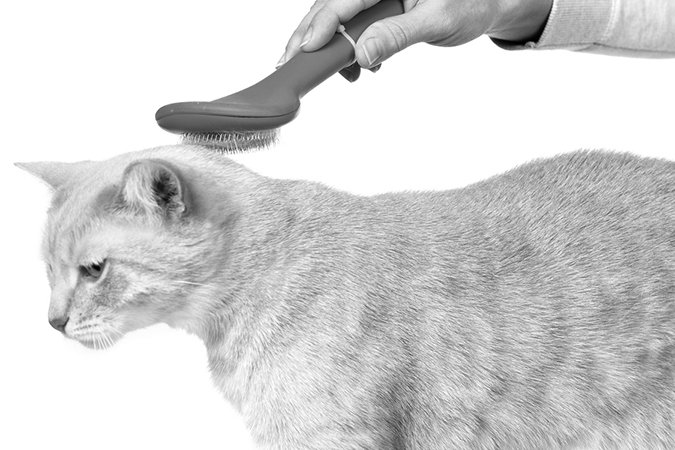
9. Inspect the coat carefully during grooming. Be on the alert for suspicious lumps or bumps that may indicate a skin condition or possible disease.
10. Trim your cat’s claws at least once a month to prevent overgrowth and torn or split nails.
Daily Tooth Brushing — Yes!
11. Commit to brushing your cat’s teeth daily — it’s the gold standard for prevention — but first check with his veterinarian to make sure he doesn’t have any problems causing pain in his mouth. The veterinarian can provide information and guidance about daily tooth brushing. Cats like routine, so try to brush at the same time each day and follow with a healthy treat or playtime. Start gently, using gauze wrapped around your finger and dipped in chicken broth or toothpaste before moving on to brush.
12. Ask your cat’s veterinarian to regularly evaluate his oral cavity. More than 70 percent of cats have gum disease by age 3, according to the American Veterinary Dental Society. Selecting dental products, such as cat finger brushes, dental treats, dental rinses and cat-safe toothpaste with the seal of approval from the Veterinarian Oral Health Council can help prevent disease while maintaining your cat’s oral health.
Going Bowl-Free
13. Bring out the inner hunter in your cat by going bowl-free for at least one meal a week. Instead, put the measured portion of food in a food puzzle or treat ball for him to swat and bat around to trigger the release of the kibble from the device.
© sytnik | Bigstock

“Treat balls help slow eating if you have a cat who seems to quickly gulp down food,” says Dr. Houpt. “Chasing and swatting a food puzzle can also serve as an outlet for cats who can be pushy at mealtime or chase your ankles.”
14. Become a label reader. Select quality commercial products that list a real meat, such as beef, chicken or salmon, as the first ingredient. Choose food made in North America to ensure quality compliance.
15. Measure each meal to prevent obesity in your cat. Overweight or obese cats are at greater risk for a host of health conditions, including arthritis and diabetes, so strive to keep your cat at a healthy weight. More than half of cats are overweight or obese, according to the Association for Pet Obesity Prevention. Cats fare best when they are served two or three meals a day and not allowed to graze all day from a bowl overflowing with kibble.
“Due to intestinal upset and sensitive stomachs, especially in our senior/geriatric population, I often recommend feeding at least three times per day,” Dr. Kaplan says. “When pets go longer than eight hours between meals, they often vomit (bilious vomiting syndrome) or resort to dietary indiscretion since they are hungry. Pets who are meal-fed are much more lean and in shape those fed free choice.”
© cynoclub | Bigstock
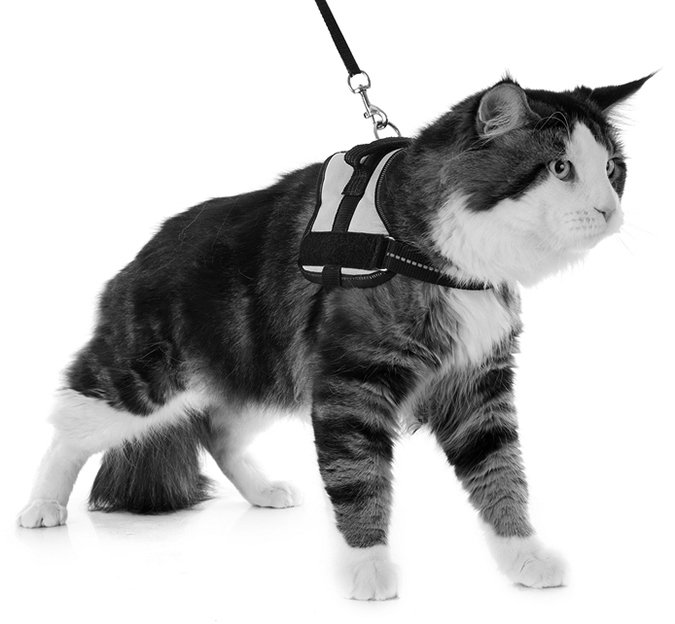
Making a Happy Home
16. Let your indoor cat view what’s going on outside from a safe place by positioning a sturdy scratching post or cat tree, or provide a window sill with a comfy perch so he can “stalk” birds and squirrels.
17. Allow your cat to climb and survey a room from on high by installing cat-safe shelving.
18. Buy or build a catio to give him safe outdoor access. Or if you have an outgoing, confident cat, train him to wear a harness and walk on a leash.
19. Schedule daily mini-play sessions. Mix and match different types of cat toys to keep his interest. Toss catnip-filled toys or crinkly balls for your cat to chase or drag a feather wand toy for him to stalk and pounce.
20. Boost mental stimulation by teaching your cat new tricks or introducing him to clicker training.
“Clicker training is an example of positive reinforcement training,” says Dr. Kaplan. “It can not only teach a cat new tricks but also build his confidence.”


